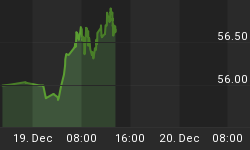A reader asked whether there is "a correct rate of monetary growth to which the Reserve should adhere and if so how would this be determined?" There really is no answer to this question when countries operate on fiat standards. If the world were on the old gold standard then the market would decide the optimum quantity of the stock of money. Let us take the period 1874-1900 when wholesale prices fell by over 30 per cent in Britain while both real wages and money wages rose considerably.
These trends were created by new cost-reducing technologies that were quickly embodied investments that increased productivity at a rate that exceeded the output of gold. The thought that the money supply needed to be manipulated in order to control the price level would have been anathema to the Bank of England and Treasury official alike. The market determined the supply of gold and that was that.
As Britain was on a gold standard the result of increased productivity was a steady fall in prices. Of course, as prices fell the value of gold rose, which is another way of saying the demand for gold increased. Nevertheless, most economists and economic historians still insist on describing the period as one of deflation despite the fact that a genuine deflationary regime is the result of a monetary contraction. (It's a sad reflection on mainstream economists when they cannot distinguish between a monetary induced change in prices and a goods induced change caused by increased productivity).
The principle point is that the market basically determined the quantity of money (gold), the supply of which at any time was always sufficient to meet the demands of a growing economy while equitably spreading the fruits of technology by lowering prices. But when it comes to monetary history we must never take anything for granted. In fact, nineteenth century Great Britain was a long way from being on a pure gold standard.
According to Sir George Paish before 1913 the gold reserve of the Bank if England never exceeded $50,000,000. Jacob Viner commented on how the British banking system rested on an extremely low ratio of gold to liabilities. He estimated that the ratio "fell at times to as low as 2 per cent and never between 1850 and 1890 exceeded 4 per cent" (Jacob Viner Studies in the Theory of International Trade, Harper & Brothers, 1937, p. 264)
Under the present regime of dangerous monetary mismanagement the ideal is supposed to be one in which the price level remains comparatively stable. What the vast majority of economists do not realize is that attempts to stabilise the price level will not prevent booms and busts, as demonstrated by America's 1920s boom that was followed in turn by the Great Depression. The economic reality is that there is no monetary "middle ground". So long the world sticks to fractional reserve banking and fiat money booms and busts are inevitable.
It's easy to assume that the Reserve doesn't even believe that money really matters all that much. In case anyone thinks I'm drawing a long bow here I should draw their attention to the report of England's 1959 Radcliffe Committee that concluded money supply didn't matter because the velocity of money was uncertain and what really mattered was "total liquidity".
This view should have been permanently put to rest in 1969 by A. A. Walters of the London School of Economics when he showed "total liquidity" to be an empty concept, stating emphatically that it is "impossible in principle to measure liquidity". Nonetheless, I suspect that the conclusion of the Radcliffe Report still haunts the Reserve and the Treasury. I recall that some years ago a former Treasury official contended with me that the existence of "money substitutes" made the monetary argument irrelevant because it is impossible to measure let alone target the money supply*.
This is an extremely dangerous error and an inexcusable one coming from a former treasury official. The money supply can be targeted and money defined. I pointed out, to no avail, that so-called money substitutes, sometimes called intermediaries, quickly lose their alleged status as "near moneys" when the central bank slaps on the monetary breaks.
*In 1801Walter Boyd fired the volley that started the "bullion controversy" from which our current bunch of central bankers and treasury officials have learnt nothing. Boyd defined with admirable clarity precisely what money is not, as the following clearly shows.
By the words 'Means of Circulation', 'Circulating Medium', and 'Currency', which are used almost as synonymous terms in this letter, I understand always ready money, whether consisting of Bank Notes or specie, in contradistinction to Bills of Exchange, Navy Bills, Exchequer Bills, or any other negotiable paper, which form no part of the circulating medium, as I have always understood that term. The latter is the Circulator; the former are merely objects of circulation. (Walter Boyd, A Letter to the Right Honourable William Pitt on the Influence of the Stoppage of Issues in Specie at the Bank of England, on the Prices of Provisions, and other Commodities, 2nd edition, T. Gillet, London, 1801, p. 2).















